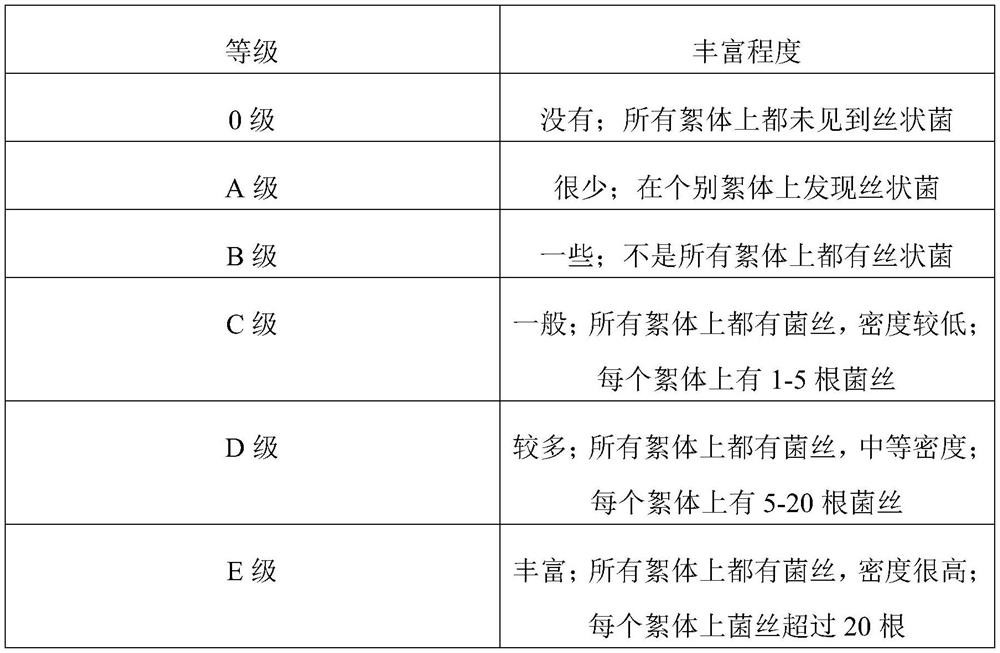Immobilized activated sludge and preparation method thereof
A technology of activated sludge and aluminum hydroxide, which is applied in chemical instruments and methods, water/sludge/sewage treatment, biological water/sewage treatment, etc. There are few types of problems, to achieve the effect of strengthening the immobilization effect, reducing the loss, and reducing the loss of microorganisms
- Summary
- Abstract
- Description
- Claims
- Application Information
AI Technical Summary
Problems solved by technology
Method used
Image
Examples
Embodiment 1
[0023] An immobilized activated sludge, including the following weight raw materials: 40kg activated sludge, 12kg biochar, 2kg lignin, 0.3kg bacterial powder, 1kg propylene glycol butyl ether, 2kg ethylenediaminetetraacetic acid, 0.8kg calcium carbonate, 3kg bag Embedding agent, 0.6kg aluminum hydroxide, 0.4 parts of hydroxyapatite, 12kg of water.
[0024] The activated sludge is the primary sludge discharged from the primary sedimentation tank.
[0025] The biochar is pulverized coconut peat, placed in an anoxic environment, heated to 600°C at a rate of 8°C / min for heating and carbonization, kept for 1 hour, cooled and ground to obtain biochar.
[0026] The bacteria powder is obtained by mixing nitrifying bacteria, Micromonospora rubrum and Bacillus subtilis at a mass ratio of 1:0.8:1.1.
[0027] The embedding agent is obtained by mixing alginic acid, gelatin and polyvinyl alcohol in a mass ratio of 0.5:1:1.3.
[0028] A preparation method of immobilized activated sludge, c...
Embodiment 2
[0033] A kind of immobilized activated sludge, including the following weight raw materials: 50kg activated sludge, 15kg biochar, 3kg lignin, 0.5kg bacterial powder, 0.8kg propylene glycol butyl ether, 3kg ethylenediaminetetraacetic acid, 1.2kg calcium carbonate, 5kg Embedding agent, 0.7kg aluminum hydroxide, 0.5 parts of hydroxyapatite, 10kg of water.
[0034] The activated sludge is the excess sludge discharged from the secondary sedimentation tank.
[0035] The biochar is made by crushing crop straws, placing them in an anoxic environment, heating and carbonizing at a rate of 6°C / min to 500°C, keeping the temperature for 6 hours, and grinding the obtained biochar after cooling.
[0036] The bacteria powder is obtained by mixing nitrifying bacteria, Micromonospora rubrum and Bacillus subtilis in a mass ratio of 1:0.6:1.1.
[0037] The embedding agent is obtained by mixing agar, silica gel and polyvinyl alcohol in a mass ratio of 0.8:1:0.9.
[0038] A preparation method of ...
Embodiment 3
[0043] The difference between embodiment 3 and embodiment 1 is:
[0044] Step S1 is to mix lignin, embedding agent, water and biochar evenly under the condition of 55°C, then let it stand for cooling, add bacterial powder and stir at a speed of 300r / min, and stand at 0-5°C for 1.5- 3h, to obtain mixture 1;
PUM
 Login to View More
Login to View More Abstract
Description
Claims
Application Information
 Login to View More
Login to View More - R&D
- Intellectual Property
- Life Sciences
- Materials
- Tech Scout
- Unparalleled Data Quality
- Higher Quality Content
- 60% Fewer Hallucinations
Browse by: Latest US Patents, China's latest patents, Technical Efficacy Thesaurus, Application Domain, Technology Topic, Popular Technical Reports.
© 2025 PatSnap. All rights reserved.Legal|Privacy policy|Modern Slavery Act Transparency Statement|Sitemap|About US| Contact US: help@patsnap.com


